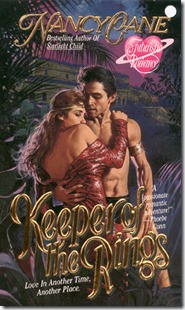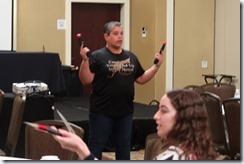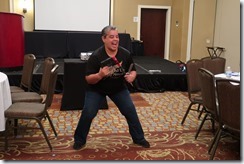Do you dread writing a synopsis? If so, get used to it, because this tool is essential to your career as a writer. Not only is a synopsis necessary for a book proposal, but the sales force at your publishing house may use it to design your cover or to plan marketing materials for your book.
A synopsis is a complete narrative of your story told in present tense. A synopsis should include essential plot points plus your character’s emotional reactions. It can act as a writing guideline while not being so rigid that your story can’t change. When you finish the actual writing portion, you can return to the original synopsis and revise it to suit the finished storyline. So how should you proceed?
1. Consider adding a tag line (i.e. one liner story blurb) on your first page before the story begins.
2. Open with a hook.
3. Use action verbs. Your story should be engaging as you convey it to the reader.
4. Make sure the story flows in a logical manner from scene to scene. In a mystery, present the crime, the suspects, and their secrets. Then show how the sleuth uncovers their hidden agendas and unravels the clues.
5. Avoid backstory. Stick to present tense and keep moving the story forward. Enter background events in small doses via dialogue or interspersed with action, and only if it applies to the current situation. Less is better. And don’t reveal too much up front. It’s best to keep the reader guessing.
6. Leave out minor characters, physical descriptions unless applicable to the storyline, and subplots unless critical to the resolution of the main plot.
7. Avoid snippets of conversation, point-to-point description of your character’s every move, jumping from one place to another without any explanation, gratuitous sex, or threats on a character’s life unless they evolve from the story.
8. Include your character’s emotional reactions.
9. Stay in the protagonist’s viewpoint as you would in the story. Use transitions if you switch viewpoints. Be careful of too much head hopping in a synopsis.
10. Show your character’s internal struggle as well as her external conflict. What’s inhibiting her from making a commitment to the hero? What is causing her to doubt her abilities?
11. Include the emotional turning points. For any genre, tell us what’s at stake for the heroes. What will happen if they fail?
12. In a romance, make sure you cover the goals and motivation of your hero/heroine, how they first meet, their romantic conflict, what leads up to the first kiss, complications that keep them apart, what they admire in each other, the black moment, and the resolution. What makes these two people right for each other that no one else can provide?
13. If it’s the first book in a series, you might begin with a short profile of your main character(s). For a mystery, offer a few paragraphs about the sleuth. For a romance, write a paragraph each about your hero and heroine. What do they hope to accomplish? What is keeping them from reaching this goal? Why is it important to them?
14. Explain the ending. In a mystery, this means you tell whodunit and why. In a romance, it’ll be the resolution of the romantic conflict.
15. What lesson will your protagonist learn in this story? How will she grow and change?
MYSTERY EXAMPLE FROM FACIALS CAN BE FATAL (Bad Hair Day #13)
Salon owner Marla Vail’s new day spa hits a snag when a client dies during a facial.
Screams emanating from next door draw salon owner Marla Vail’s attention. She rushes into the adjacent day spa to see a crowd gathered in front of a treatment room. It appears Rosana Hernandez, an aesthetician, was doing a facial on her first morning client. She’d put on the woman’s chemical mask and left the room for ten minutes. Upon her return, Valerie Weston was dead.
Since the receptionist had enough presence of mind to call 911, Marla enters the treatment room to see if CPR will help. It’s too late. The woman has no pulse, and her skin is clammy. The greenish cream mask clings to her face.
The police arrive, along with Marla’s husband, Detective Dalton Vail. He takes charge of the scene and questions Rosana. The tearful beautician claims Val had been a long-time customer, and the only known problem she had was a latex allergy. Rosana was careful not to use latex gloves in her presence.
Marla, owner of the spa plus the salon, is upset about the negative publicity this incident will generate. She has applied to become an educator for Luxor Products, whom she’d worked for once at a beauty trade show. But there’s another person being considered for the job. A smear on Marla’s reputation would be detrimental. But she’s also concerned about Rosana and proving the aesthetician wasn’t at fault.
Marla has an additional problem during this December season, which should be full of happy holiday plans. One of her clients is suing her. The woman claims Marla left on her hair dye too long, and it burned her scalp. Marla contacts her insurance agent.
Doubts roil in her stomach, and they increase when lab tests confirm liquid latex had been added to Val’s face mask cream. Val died from anaphylactic shock. Rosana denies her involvement, and Marla believes her. So who else had access to the room, and why would someone target Val?
ROMANCE EXAMPLE FROM WARRIOR LORD (Drift Lords #3)
A fantasy wedding in Las Vegas turns into a nightmare when contest winner Erika Sherwood realizes she’s married an alien.
Erika has had one drink too many at the blackjack table in Las Vegas when a bearded man wearing a cape and sword drops into the seat next to her. While his strange garb doesn’t arouse her curiosity, his comment on her wristwatch does. A gift from her parents when she turned sixteen, the watch runs with no visible mechanism and no battery, and it has a peculiar symbol engraved on its face. Her nape prickles at the man’s interest but an announcement over the loudspeaker distracts her.
The casino is holding a contest for engaged couples to win fifty thousand dollars. The lucky winners will have a televised wedding and receive a new car, a stay in the honeymoon suite, and the cash.
Erika mutters how she could sure use those funds, and the mysterious stranger overhears. He leans toward her and makes a scandalous suggestion. Why not pretend they’re engaged and enter the contest? He needs a room in the Viking-themed resort, but the hotel is full.
Giddy from the free drinks offered by the staff, Erika accepts his proposition. She doesn’t think they’ll win, but hey, the competition will be fun and all contestants get bonus credits on their club cards.
When they actually win the contest, she goes through the rushed wedding ceremony in a mental fog. Magnor kisses her and something sparks between them. However, she balks when he suggests they stay together in the honeymoon suite. She already has a room at the resort. However, his rationale is valid. If the resort people discover their deception, she and Magnor might lose their prizes.
Soon she’s alone in a room with the tall stranger. She’s drawn to his brooding good looks and muscled form but is puzzled when he becomes taciturn at her attempts to draw him out.
Someone knocks on the door. It’s the official from the televised marriage. He wants Erika’s address so he can mail out the official marriage certificate. With a jolt of clarity, Erika realizes the ceremony was valid.
Quelling her panic, she considers that having an unexpected husband might suit her needs.
<><><>
I hope these examples make you curious to read on. How long should your synopsis be? Mine average around fifteen pages. Sometimes a publisher will ask for a one or two page synopsis which means you’ll have to encapsulate your story into a shorter form. Stay tuned for my next post on The One Page Synopsis.
15 Steps to Writing the Smart Synopsis #amwriting #pubtip Share on X





























